SEARCH






|
|
|
|


by Yvette Depaepe
Published the 21st of October 2024
Damijan Sedevcic's street photography is strong and unique. He tries to show our world in a different way. He quotes: „Every city, even the smallest, has its own charm, streets and people that deserve to be noticed and photographed. An eternal moment of people passing by, strangers who most of the time don't even notice you. Whether in the glorious morning light, in the shade or in the rain, hidden under umbrellas. This is the essence of street photography, and when it all comes together, it's perfect.“ Damijan is convinced that photography will survive. His answer to the question of whether we will give in and surrender to AI is 'absolutely not'. Art photography in general will survive and exist. Especially because of the young enthusiasts who are returning to the roots, to the beginning. To the analogue waters, to the roll of film. They are trying to use the old to create something new and, according to Damijan, they are succeeding. Follow me to find out more about the personality behind the images in this interview.
'the pianist'
Dear Damijan, please introduce yourself and tell us about yourself, your hobbies or other projects you are involved in.
I was born in 1969 in Nova Gorica, Slovenia, close to the Italian border, where I live and work. Photography has always been close to me, at first more casually, but with the advent of the digital era new paths and directions opened up. I enjoy researching and experimenting with techniques that are less commonly used, such as multi-exposure or long exposure with simultaneous camera rotation (icm). Genre-wise I have a strong connection to street photography, the play of shadows, light, reflections on wet streets after rain and interesting people in the local environment. The spirit of old times, dusty buildings and long abandoned spaces have a special photographic place for me. Occasionally, although too rarely, I also like to photograph concerts. I have been a member of the local photography club for many years. During this time, I have prepared several solo exhibitions and participated in several group exhibitions and competitions. In 2017, the Artistic Council of the Slovenian Photographic Union awarded me the title of Master of Photography.
'city escape'
Your street photography is excellent, both in black and white and in colour. All your images have your signature, what does street photography mean to you?
Thank you, I always try to show our world in a different way. Every city, even the smallest, has its own charm, streets and people that deserve to be noticed and photographed. An eternal moment of people passing by, strangers who most of the time don't even notice you. Whether in the wonderful morning light, in the shadows or in the rain, hidden under umbrellas. This is the essence of street photography, and when it all comes together, it's perfect.
'my umbrella'
What drew you to street photography and how did you discover it?
Like everyone, or almost everyone, I tried my hand at classic photography, nature, landscape. The transitional phase, which still holds my interest, was photographing abandoned, half-demolished and sometimes dangerous buildings. After experimenting with multi-exposure photography, a new door opened and in combination with my post-production, I found my personal touch.
'evening in Venice'
What do you think makes a memorable street photograph?
I find that many street photographers have very different approaches, even to the same subject. From pure reality, not to say postcards, to mysticism and abstraction, to different processing techniques. All this makes for an unforgettable impression of the street.
'on the bridge'
Can you describe your overall photographic vision, Damijan?
My question is: can photography survive? Will we give in and surrender to artificial intelligence? Absolutely and certainly not. Art photography in general will survive and exist. Especially because of young enthusiasts who are returning to the roots, to the beginning. To the analogue waters, to the roll of film. They are trying to use the old to create something new. And I can say that they are succeeding.
'...my umbrella'
How important is content versus form in street photography? Do you personally think one is more important than the other?
The content is the person you are portraying in the photo. Although it is possible that only a shadow or a silhouette gives us a story and a thought: where, why, who... so the form complements the content and vice versa. Hand in hand.
'...red suitcase'
What do you want viewers to take away from your work?
I prefer to avoid classic reportage photography. I don't look for or need gruesome, hard moments, although I respect this genre and the photographers who do it. I just want to freeze the moment in a positive way, even if it seems dark at first. If someone tells me that my work is dark but beautiful and special, then I am satisfied.
'day in Venice'
What do you think are some of the clichés in street photography that you avoid?
We all know how difficult it is to do something new and original. The world has become small, with one click we can see photos from all over the world. Thousands and thousands of them. I know that the footstep of a stranger and his shadow may be a cliché. It's seen countless times, because the shadow of a step remains a shadow, everywhere in the world. But I try to present that shadow in my own way.
'..echoes'
What were the difficulties you encountered when you first started street photography and what advice would you give to beginners?
People on the streets of a city are all different. Some don't like the proximity of the photographer. Just by looking at the camera, they become numb or withdraw. Others are happy to jump in front of the camera or are completely indifferent. Especially in places where people do not like the camera, it is important to have the right amount of discretion, politeness and understanding. It is always a dilemma to capture moments where the person in the foreground might be too recognisable and to decide whether or not to publish the photo. Most of the time we don't publish it, but when we do, it should be the person, beautifully presented in a beautiful moment. In short, with a sense of beauty. My advice or rule for everyone and especially for beginners in street photography is: always plan and expect the unplanned... and always have your camera on and ready to shoot.
'unknown'
Who are some of your favourite photographers and how have they influenced you?
We all know Bresson, who created the concept of street photography. Once upon a time. He and his contemporaries are written in history and their work is like a book we should learn from. Maybe it's easier now, in the digital age, where everything is at our fingertips. That's why there are a lot of authors I follow, at least occasionally. I admire and try to understand the way they work, but I also try to do something new. Although it is very difficult to be original all the time.
'on the stairs'
When you are out shooting, how much of it is instinctive and how much is planned?
We photographers have our favourite spots, places where we can get a good shot. The shot of the decade. Street photographers in particular can be stubborn and persistent. Me and my photographer friends have been visiting nearby Venice and Trieste for years and we always succeed. Although the route to these familiar places is sometimes full of unplanned motifs, light, weather or interesting people. It is here, in unknown territory, that your experience and instinct, perfected over the years, shine through.
'the bridges'
What equipment do you use (camera, lenses, bag)?
What software do you use to edit your images? Can you tell us more about your workflow?
I photograph with a canon eos 5D markIII and the canon 24-105 mm basic lens, which is the one I use most along with the sigma 35 mm and sigma 120-400 mm. The 24-105 mm is an all-round lens that I find excellent and of sufficient quality for street photography.
In the field, I take most of my shots with the multi-exposure setting at 5, maybe more, up to 9, which is the maximum the camera allows. In addition to the 5 that the camera automatically combines, I always take another single of the same subject.
On the PC, I combine the automatically stitched photos with the single shot and add a soft texture of my choice. I do all this in Photoshop in layers, which makes it easier to add or remove elements with the eraser tool. I reduce the saturation of the photo slightly and then add it back in places with the sponge tool. I add some noise (grain) at the end if necessary.
From time to time I also take photos using the intentional camera movement (icm) technique, where you move the camera while the shutter is open. I also take another shot with a shorter exposure time so that I can combine them later if necessary. The subject remains the same, of course.
With both techniques, success is not guaranteed on the first try. With experience, work and a bit of luck, it has to work in the end.
'..once upon a time'
Are there any specific directions you would like to take your photography and can you tell us about your future plans or projects you would like to be involved in?
No, I don't think so. The most important thing for me is to master the camera perfectly. That means changing settings almost blindly at any moment. It is only when all of this becomes subconscious and routine that you become the master of the moment.
'on the dark side'
What role has social media played in your photography?
I always give priority to professional media, websites that focus on good photography by the world's best photographers. Of course, every photographer, including myself, is aware that you can also increase your visibility through social media, which is used by a large number of people. And that's important, because photography needs an audience.
'run'
What is one question that no one has ever asked you that you wish they had?
It is difficult to give a definitive answer. And it depends on the genre of photography you create. I know that the average viewer doesn't really care how hard you tried to get a good shot. Maybe you stood for hours in the cold, or on the edge of a cliff, or in a dangerous building where you can only thank your luck that you came out without a scratch. At the end of the day, it's your passion and you'll sometimes go beyond yourself for a good photo. Maybe that's why photography is the most beautiful work of art.
Now that we are almost at the end of this interview, I would like to ask you to tell us how you discovered 1x and what you think of it as a home base for your work.
I had been visiting the 1x website every day for many years before I had the courage to join. In short, it is simply a daily dose of excellent photography.
Thank you for giving me the opportunity to introduce myself.
'Bridges'
'rainy day'
'rain man'
'on the stairs'
 | Write |
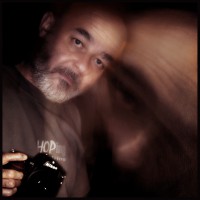 | Milan Malovrh PRO A tribute to the master of expressive photography, looking for a stylistically unique way of photographic expression;
Bravo Damjan! |
 | Subhajit Das PRO Excellent work of art. Many Congratulations!! |
 | Sunny Lin PRO Unique style, unforgettable images, congratulations! |
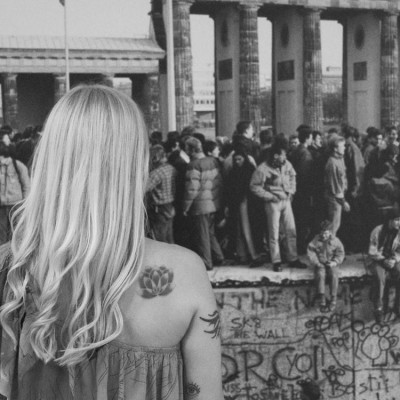 | Gabriela Pantu PRO Brilliant vision of the street stories, which are life stories, rich and captivating tapestries.Congratulations, dear Damijan, and thank you for sharing your thoughts.Thank you, dear Yvette, for this beautiful article! <3 |
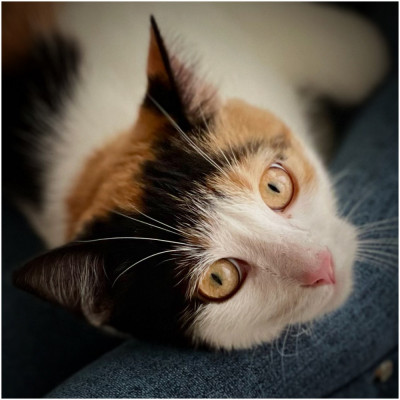 | Molly Fu APA PRO Your works are beautiful and special, excellent techniques and very artistic, congrats Damijan Sedevcic!!! Love this interview dear Yvette, thanks! |
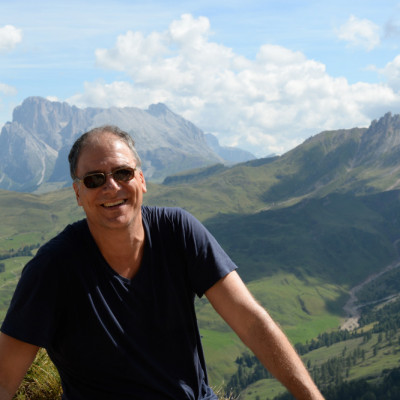 | Franz Engels PRO Wonderful, unique and artistic street photography. My compliments to the artist, Damijan Sedevcic! Thanks a lot also to Yvette for this inspiring article! |
 | Alessandro Traverso PRO Fantastic! |
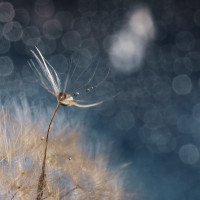 | Igor Kopcev PRO Excellent works of art! Congratulations! |
 | Ujjal Kumar Baidya Excellent work of art!! Congratulations!!
|
 | GukSeon Kim PRO Great pictures! Congratulations! |
 | Atul Saluja PRO Simply remarkable series of works in your portfolio Damijan. Congratulations on the feature! |
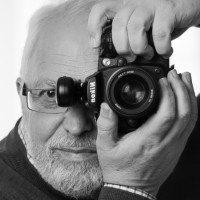 | Eduardo Blanco García PRO Excellent |